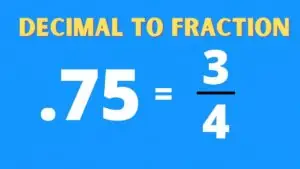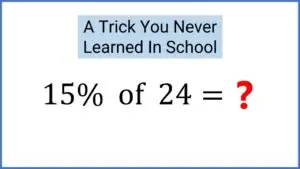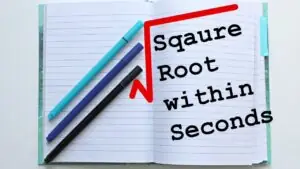In the realm of mathematics, regrouping is a fundamental concept that plays a crucial role in performing operations such as addition and subtraction with multi-digit numbers. It is a strategy that allows us to manipulate numbers effectively and arrive at accurate results. In this article, we will delve into the meaning of regrouping, explore its applications, and provide step-by-step explanations along with relevant examples. So let’s embark on this mathematical journey and unlock the secrets of regrouping!

✅ AI Essay Writer ✅ AI Detector ✅ Plagchecker ✅ Paraphraser
✅ Summarizer ✅ Citation Generator
Understanding Regrouping in Math
Regrouping, also known as “carrying” or “borrowing,” involves rearranging digits within numbers when performing mathematical operations. It mainly comes into play when dealing with numbers that have more than one digit. The primary purpose of regrouping is to ensure accurate computations and maintain the place value system.
Regrouping in Addition
When adding multi-digit numbers, regrouping occurs when the sum of digits in a specific place value column exceeds nine. Let’s understand this concept with an example:
Example 1: Consider the addition problem: 58 + 47. Here’s how regrouping helps us solve it:
58
+ 47
-------
105
To solve this problem, we start by adding the digits in the ones column: 8 + 7 equals 15. Since 15 is greater than nine, we regroup the ten’s value by carrying the digit 1 to the tens column. The remaining value, 5, stays in the ones column. Then, we add the digits in the tens column, including the carried value, which gives us 5 + 4 + 1, equaling 10. Finally, we write down the resulting sum, 105.
Regrouping in Subtraction
In subtraction, regrouping comes into play when the digit being subtracted is larger than the corresponding digit in the minuend. Let’s consider an example:
Example 2: Let’s subtract 364 from 598. Regrouping is necessary in this scenario:
598
- 364
-------
234
Starting from the ones column, we subtract 4 from 8, which gives us 4. In the tens column, we need to subtract 6 from 9. However, since 6 is larger than 9, we need to regroup. We borrow 1 from the hundreds column and increase the value of the tens column by 10, making it 19. Now, we subtract 6 from 19, resulting in 13. Finally, we subtract 3 from 5 in the hundreds column, giving us 2. Thus, the difference between 598 and 364 is 234.
Teaching Regrouping in Math: A Step-by-Step Approach
To ensure a thorough understanding of regrouping among students, it is crucial to follow a step-by-step teaching approach. Let’s explore three essential steps to help students grasp this concept effectively.
Step 1: Introduce Manipulatives and Hands-on Experience
To provide students with a concrete understanding of regrouping, begin by using manipulatives such as base-10 blocks or Montessori decimal system beads. These physical objects help students visualize the concept of tens, units, hundreds, and thousands. By engaging in hands-on activities, students can count and exchange units for tens or vice versa, gaining a tangible sense of regrouping.
Step 2: Utilize Visual Representations
Once students have experienced regrouping through manipulatives, introduce visual representations to aid their understanding. Visuals can include diagrams, charts, or drawings that illustrate the regrouping process. Online math programs like Happy Numbers offer interactive problems with visual cues to reinforce the concept. Visuals bridge the gap between the use of manipulatives and the eventual transition to pencil-and-paper calculations.
Step 3: Progress to Traditional Methods
After students have gained proficiency with manipulatives and visual representations, gradually introduce them to traditional pencil-and-paper methods of performing regrouping operations. Emphasize the importance of place value and guide them through the step-by-step procedures. Practice problems with varying difficulty levels will help solidify their understanding and enhance their computational skills.
Importance of Regrouping in Real-Life Situations
Regrouping is not limited to mathematical exercises; its applications extend beyond the classroom into real-life situations. Let’s explore a few instances where regrouping is relevant:
Financial Transactions
Regrouping becomes essential when handling monetary transactions involving large sums of money. For instance, when calculating the total cost of groceries, if the units exceed nine, regrouping is necessary to accurately determine the total amount.
Time Management
Regrouping plays a role in time management as well. When scheduling appointments or allocating time for various activities, regrouping can help ensure efficient utilization of time slots and effective time management.
Data Analysis
In fields such as statistics, regrouping aids in organizing and analyzing data. Grouping data into categories or intervals allows for better visualization and comprehension of information.
Conclusion
Regrouping is a fundamental concept in mathematics that enables us to perform accurate calculations, understand place value, and solve complex problems. By following a systematic teaching approach and providing students with manipulatives, visuals, and practice opportunities, we can help them develop a deep conceptual understanding of regrouping. The applications of regrouping extend beyond the math classroom, enhancing financial literacy, time management, and data analysis skills. So, embrace the power of regrouping and unlock the potential for mathematical success!
FAQ
What are some common examples of regrouping in math?
ne common example of regrouping in math is when adding two-digit numbers, such as 48 + 37. Here, regrouping occurs when adding the ones column because 8 + 7 equals 15, which is greater than 9. So, we regroup the 10s by carrying over the value to the 10s column and write down the units.
Another example is in subtraction, where regrouping is necessary when subtracting numbers with larger digits in the same place value. For instance, subtracting 209 from 395 requires regrouping in both the tens and ones columns.
Are there different methods of regrouping in math?
Yes, there are different methods of regrouping in math. The most commonly used methods are the traditional method, which involves carrying or borrowing digits when performing addition or subtraction, and the expanded form method, where numbers are expanded into their place value components and regrouping is done based on the values of the digits.
How can regrouping be applied to addition and subtraction problems?
Regrouping is applied in addition when the sum of digits in a column is greater than 9. In such cases, we carry the excess value to the next higher place value column. For subtraction, regrouping is required when the digit being subtracted is larger than the corresponding digit in the minuend. We borrow from the higher place value column to adjust the value and ensure accurate subtraction.
How does regrouping relate to place value in mathematics?
Regrouping is closely tied to the concept of place value in mathematics. It involves rearranging or exchanging digits within numbers to maintain the value of each digit based on its position or place value. By regrouping, we ensure that the value of each digit is correctly represented within the number, thereby preserving the place value system.
Are there any online resources or apps for practicing regrouping in math?
Yes, there are several online resources and apps available for practicing regrouping in math. Some popular options include educational websites like Khan Academy, MathPlayground, and SplashLearn, which offer interactive games, worksheets, and tutorials specifically designed to help students practice regrouping. Additionally, educational math apps such as Happy Numbers and Mathletics also provide regrouping practice modules to enhance learning and understanding.
Follow us on Reddit for more insights and updates.





Comments (0)
Welcome to A*Help comments!
We’re all about debate and discussion at A*Help.
We value the diverse opinions of users, so you may find points of view that you don’t agree with. And that’s cool. However, there are certain things we’re not OK with: attempts to manipulate our data in any way, for example, or the posting of discriminative, offensive, hateful, or disparaging material.